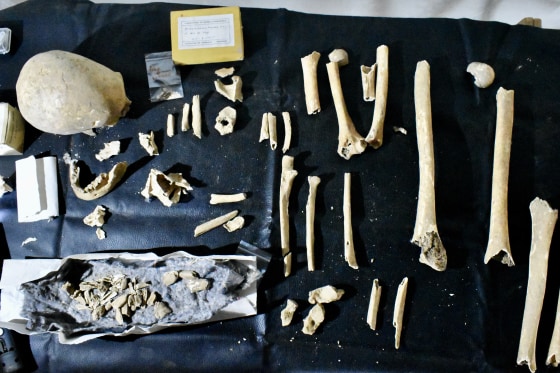Remains found in a tomb in northwestern Spain are likely to belong to a ninth-century bishop believed to have helped create the Camino de Santiago, one of Christianity’s most popular pilgrimages, a new study has found.
A combination of bone analysis, carbon dating, stable isotope analysis and DNA testing yielded data that “supports the possibility” that the human bones found in 1955 are those of Bishop Theodomir, according to a paper published on Tuesday in the “Antiquity” journal.
Oral tradition, later written down, has it that Theodomir discovered the tomb of St. James the Apostle between 820 and 830 AD following a divine revelation in what is now Santiago de Compostela, the capital of the Galicia region.
News of the discovery reached King Alfonso II of the neighboring region of Asturias, who marched with his court from Oviedo to Santiago.
The 90 mile royal pilgrimage established what is today known as the “Primitive Way”, the oldest path used by pilgrims of the Camino, or Way of St. James.
Theodomir’s existence had been hotly debated until 1955, when Spanish archaeologist Manuel Chamoso Lamas discovered a tombstone underneath Santiago de Compostela’s cathedral inscribed with his name.
An initial study of the bones concluded that they probably came from an elderly adult male, but three decades later a new assessment based on photographs of the site proclaimed them to belong to a woman aged between 50 and 70.
The newest study, led by Patxi Perez-Ramallo of the Norwegian University of Science and Technology, combined different analytical methods in a bid to recreate the individual’s life story.
The carbon-14 dating shows the person died after the age of 45, and the bones’ features suggest they had a weak build and performed little physical work during their lifetime, which is consistent with the lifestyle of high clergy during the period.
Perez-Ramallo told El Pais newspaper that there was a “98% likelihood of it being Theodomir.”
